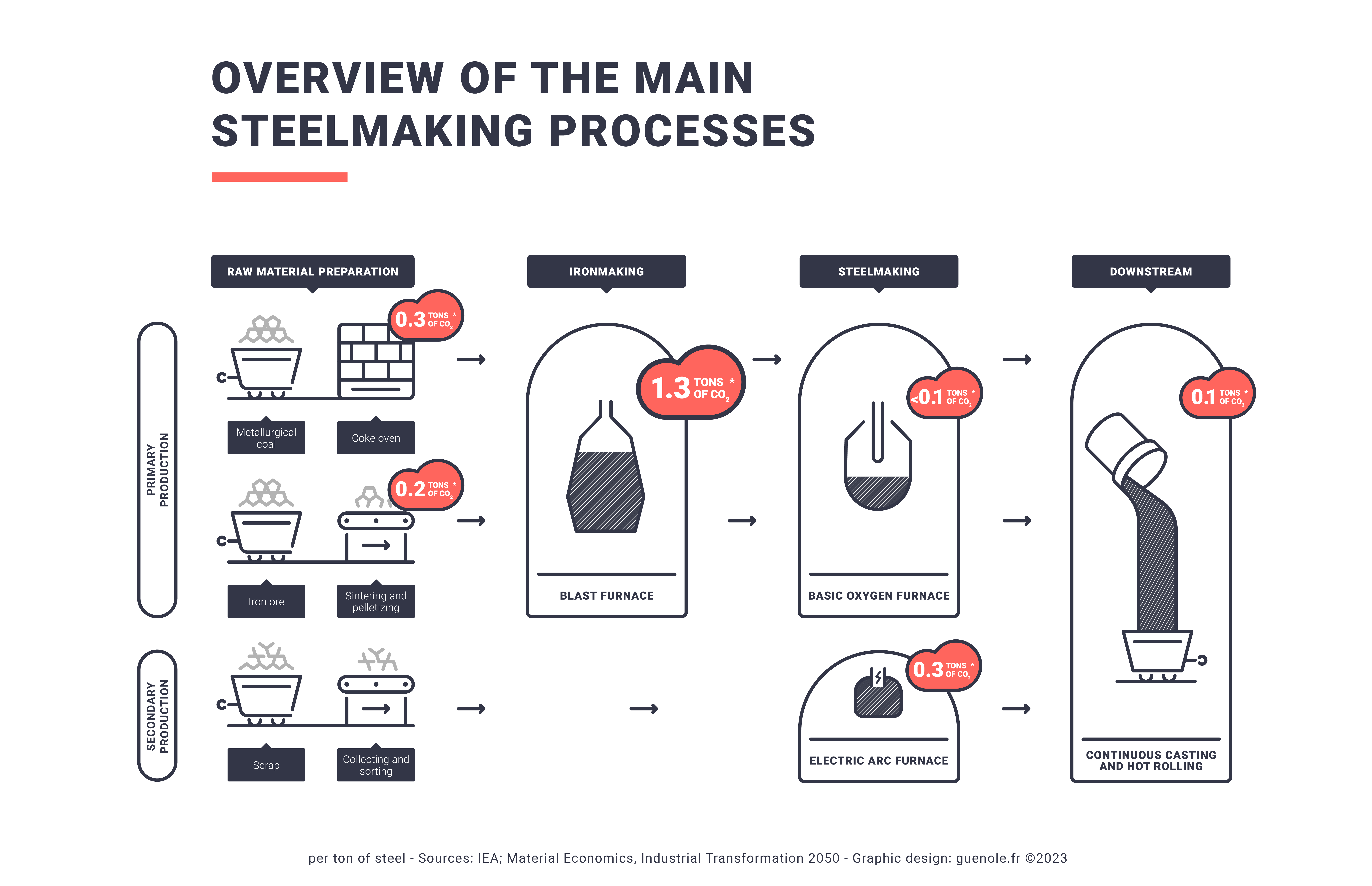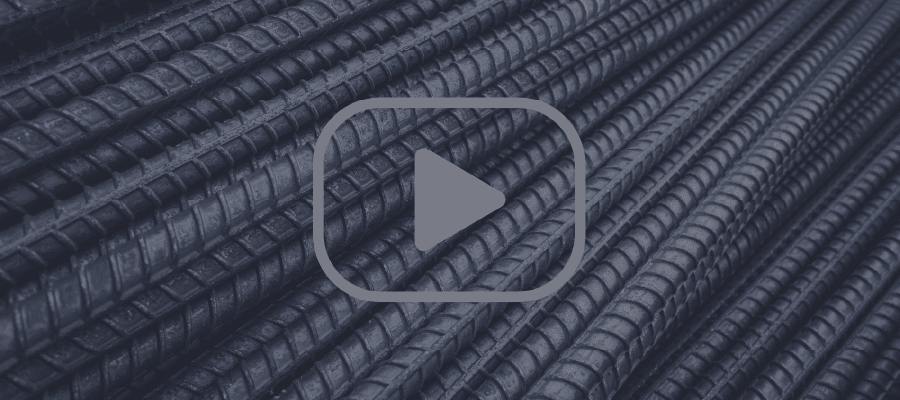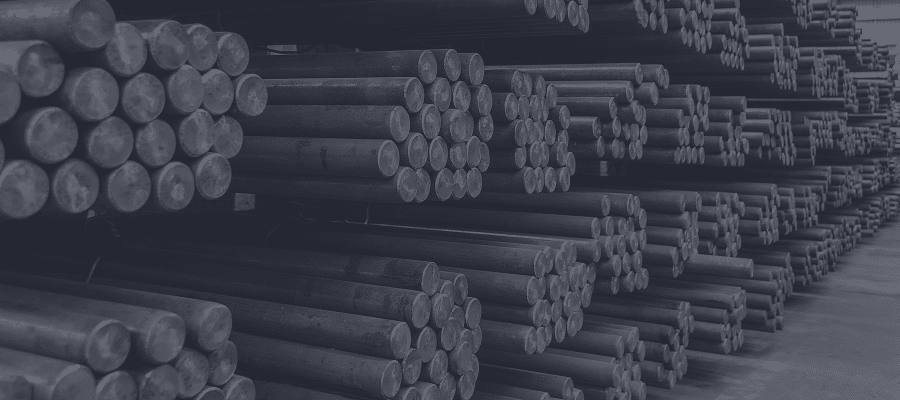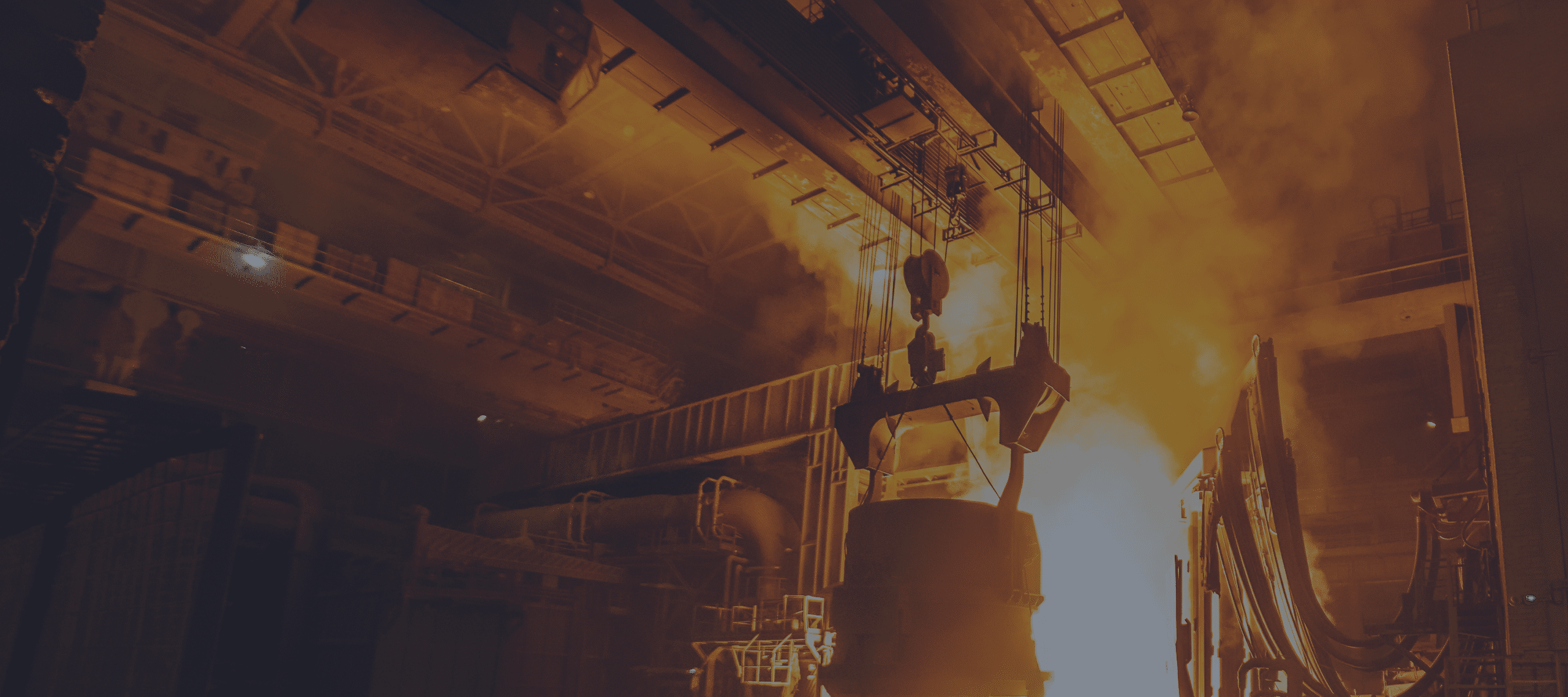Decarbonize steelmaking
Financial institutions must end steelmaking’s reliance on coal

Limiting global warming to 1.5°C requires ending the world’s reliance on fossil fuels. Achieving this challenge will only be possible through the adoption of comprehensive approaches that tackle fossil fuel production while simultaneously addressing demand-side sectors that consume fossil fuels themselves, such as the steel sector.
Current ways of producing steel are heavily carbon-intensive due to their reliance on coal – also called metallurgical coal, met coal, or coking coal, which is of a different quality than thermal coal. Decarbonizing steelmaking while meeting demand with cleaner and competitive alternatives is possible and must become a priority.
The decarbonization of steel production will only be possible if financial institutions step up to finance the right solutions. They must urgently refuse to perpetuate the steel sector’s reliance on coal and finance cleaner technologies instead.
Steel, a key component of our societies
From buildings, to cars, to domestic appliances and other equipment, steel is virtually omnipresent in our modern world, and it will not go away anytime soon. Projections predict that steel demand will increase, driven in part by developing and emerging economies that need more steel as they industrialize. Steel is also an essential part of the energy transition as it is used to build infrastructure and products such as wind turbines, solar panels, and electric vehicles.
Projections show that steel production could increase by a third by 2050. Many current facilities are also nearing the end of their lifetime, meaning they will need to be refurbished by 2030. With major investment needed, this is an opportunity to shift to cleaner technologies to produce steel. Getting it wrong would be fatal as it would mean the development of coal-based capacity, which with a lifetime of around 20 years, would lock in emissions for decades, ruining any hope of decarbonizing the steel sector in time to reach net zero by 2050.
“The current pipeline of projects clearly nonetheless falls short of what is required to meet the Net Zero Scenario.” International Energy Agency, Iron and Steel, 2022
Decarbonizing steel: time is of the essence
The steel sector is the largest industrial emitter of CO2. Due to its reliance on coal, it produces 7% of global GHG emissions and 11% of global CO2 emissions. In comparison, the aviation sector accounts for 2.1% of global CO2 emissions.
Decarbonising the steel sector is key to keep the 1.5°C target within reach. The International Energy Agency’s Net Zero Scenario calls for steel sector emissions to drop by 25% by 2030 and almost 92% by 2050. To achieve this, metallurgical coal production would need to fall by about 30% by 2030, and by 88% by 2050, based on 2021 levels. This implies that a 100-fold increase in production using cleaner steelmaking technologies would need to happen by 2030.
Yet, in many parts of the world, steel projects are heading in the wrong direction, with too many coal-based projects – over 100 globally – that continue to be developed and less than 1 Mt of primary “near-zero” emission steel being currently produced per year, whereas over 100 Mt will be needed by 2030. Fortunately, alternative technologies now exist and can be developed and deployed if the necessary financial resources are made available.
How steel is made
Today, there are two main ways to produce steel. Most of the emissions from steel come from manufacturing steel from raw materials, using metallurgical coal and iron ore. This is known as primary steelmaking. It is almost exclusively done using the blast furnace-basic oxygen furnace route (BF-BOF) and accounts for 70% of global steel production.
Steel is also produced by recycling scraps of steel. This is known as secondary steelmaking, and uses electric arc furnaces (EAF). This route is seven times less carbon-intensive than primary steelmaking, and even more so if it runs on clean sources of electricity, but it is highly dependent on scrap availability and quantity.

Less carbon-intensive ways of producing steel exist or are in development. Recent technological advances, especially using green hydrogen to reduce the iron, make it possible to decarbonize the steel sector in time to reach net zero by 2050, as proven by studies such as the Net Zero Steel Project. This implies that green hydrogen must be prioritised for so-called “hard-to-abate” sectors where it represents the best option for decarbonization. Increasing the availability of clean power sources for steel facilities is also key to decarbonizing the sector.
ArcelorMittal’s double game
As one of the biggest steelmakers in the world, ArcelorMittal has a key role to play in decarbonizing the steel industry. However, as it stands, the company’s current climate strategy falls short of what is needed to keep the 1.5°C objective alive. While it’s very clear that its medium term targets are not aligned with the goal of limiting global warming to 1.5°C, ArcelorMittal does not provide many of the details needed, such as the allocation of capex, to allow investors and other financial stakeholders to test the alignment of ArcelorMittal’s existing and planned assets against a 1.5°C pathway.
In addition, the company has seemingly adopted a two-speed decarbonization strategy, by developing green hydrogen projects in Europe and Canada, but continuing to build and expand new coal-based facilities in other parts of the world. This is the case in India where it is planning to expand the capacity of existing plants and has started building two new coal-consuming blast furnaces with the promise of adding carbon capture, utilization and storage (CCUS) to the facilities. Relying on as yet unproven CCUS technologies to justify continuing to develop coal-based facilities in the Global South is a risky bet, especially when cleaner alternatives exist, and financial institutions should not support such a strategy.
Financial institutions must push steelmakers towards the right technologies
The first step for them is to stop supporting any new metallurgical coal mines, expansion plans, or new coal-based steelmaking projects, expansion projects, or the relining of blast furnaces.
Financial institutions increasingly voice their discontent at climate action that is limited to the supply of fossil fuels. However, they are yet to adopt policies to address demand-side sectors. Their coal policies also only target thermal coal, mostly due to the belief that there are no alternatives to metallurgical coal. Fortunately, alternative technologies now exist and can be developed and deployed if the necessary financial resources are made available. This is an opportunity for them to back up their words with action.
The first step for them is to stop supporting any new metallurgical coal mines, expansion plans, or new coal-based steelmaking projects, expansion projects, or the relining of blast furnaces. The second is to make new financial services to clients and investee companies conditional on a commitment to stop developing such facilities, and to engage steelmaking companies to invest in the right technologies, across all geographies.




